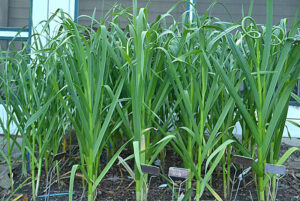
Medicinal Plants Cultivation
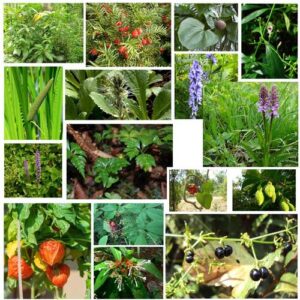 Medicinal plants have always played an important role as sources for drug lead compounds. Medicinal plants play vital roles in disease prevention.
Medicinal plants have always played an important role as sources for drug lead compounds. Medicinal plants play vital roles in disease prevention.
Medicinal plant cultivation is seen to have potential as an important source of farm income rather than the traditional crops. This is because Medicinal plants are believed to have several benefits over traditional crops, including high price, low transport costs due to higher value per unit volume and long shelf life.
The cultivation of Medicinal plants to be important for two major reasons:
- Cultivation will provide an alternative source of supply, and thus reduce the need to collect these plants from the wild. Therefore, this will reduce pressure on threatened species and promote their conservation;
- Cultivation of Medicinal plants will provide an additional source of income for the state’s poor rural population.
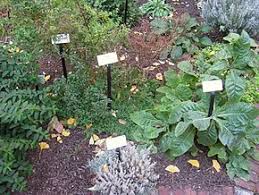 Opportunities for Medicinal plants cultivation
Opportunities for Medicinal plants cultivation
- Widespread use of alternative medicine
- Preference for natural products and chemicals from botanicals herbs
- Availability of markets (global or national)
- Availability of high yielding varieties
- Availability of agro-technologies
- Availability of processing technologies
- Profitable returns on a sustainable basis
For Medicinal plant cultivation, the Central Institute of Medicinal and Aromatic Plants (CIMAP) have developed several high yielding plants. Profitable Medicinal plant cultivation can be practiced by farmers along with traditional agricultural, horticultural crops as sole crops, and sequential crops, etc. They can be profitably inter-cropped in plantations or orchards.
 Advantages of cultivation of Medicinal plants
Advantages of cultivation of Medicinal plants
The advantages of the cultivation of Medicinal plants
- Generate employment through the improvement of ancillary industries and checks migration of rural population to urban areas;
- Relatively higher net returns compared to agricultural or horticultural crops and can be integrated into existing cropping or farming systems;
- Bye-products can be effectively utilized for reducing cultivation cost and increasing profits;
- Foreign exchange earnings through exports;
- Efficient utilization of work-force;
- The longer shelf life of end products;
- Low incidence of pests and diseases;
- Crops can be grown in degraded, marginal and problem soils;
- Crops are theft-proof;
- Crops are not eaten by domestic animals;
- Crops are not damaged by birds;
- Crops and technologies are farmer-friendly and eco-friendly;
- Medicinal plants provide better returns than traditional crops;
- Have very high domestic and export demand;
- Fetch better prices in the market;
- Medicinal plants could be stored for a long time, and sold at a time when better prices prevail in the market;
- Are the large drought-tolerant, and not easily grazed by animals;
- Have a low incidence of pest attacks and diseases;
- Require minimum resources, so the cost of cultivation is lower compared to the traditional crops;
- Plants could be raised as inter-crops, along with traditional crops, and also on degraded lands.
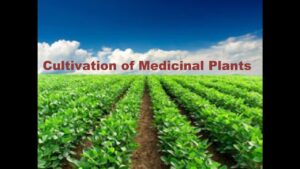 Cultivation of Medicinal plants
Cultivation of Medicinal plants
The WHO recommends the use of rotation to minimize problems with pests and plant diseases in growing Medicinal plants. Cultivation can be traditional or may make use of conservation agriculture practices to maintain organic matter in the soil and to conserve water, for example with no-till farming systems. In many Medicinal plants, plant characteristics vary widely with soil type and cropping strategy.
Medicinal plants are a source of biomolecules with therapeutic potential and lead to developing new drugs. Herbal medicines are considered as safer and better physiological compatibility and cost-effective. And, India is a gold mine of Medicinal plants and a rich repository of traditional Medicinal knowledge. Medicinal plants demand is increasing with expansion in human needs, numbers and trade purposes. Plants are mostly collected from wild sources that could pose a serious situation, along with this loss of biodiversity and forest is another main concern for the sustainable supply of Medicinal plants in the future.
Primary or post‐harvest processing process for Medicinal plants
Medicinal plant raw materials harvested or collected should be discharged and rapidly unpackaged upon receipt at the processing plant. Before processing, they must be protected from rain, moisture and other circumstances that could cause their deterioration.
During the primary processing stage, all Medicinal plant material should be inspected. Products with the inferior quality or foreign matter should be removed mechanically or by hand.
Subsequently, the transformation is performed according to the raw material to be obtained as;
Fresh herb – refrigeration
Refrigeration consists in keeping a fresh aromatic plant at a low-temperature range 2‐7 ºC. An indispensable condition is to comply with the cold chain. We would be talking about foods known as the fourth range, sometimes packaged under vacuum or modified atmosphere, to extend the expiration date, maximum 3 to 4 weeks. Generally, it is made with aromatic plants, spices and condiments for use in food, fresh, clean, chopped and packaged for immediate consumption.
Fresh herbs – basil, dill, chives, cilantro, tarragon, fennel, parsley, marjoram, mint, oregano, rosemary, savory, sage, etc.
Edible flowers – capuchin, heartsease, borage, calendula, and zucchini, etc.
Frozen herb – freezing
Freezing consists in keeping a fresh aromatic plant at a temperature range below 0ºC. An indispensable condition is to comply with the cold chain. The expiration date is extended and can be stored up to about 1 or 2 years. It consists of cutting the fresh part, generally leaves and flowers, cleaning, and packaging, labeling, and cooling. The packaging is generally plastic. Freezing the texture of the vegetable is not maintained, while it respects the organoleptic characteristics of the plant.
Plants can be frozen are basil, garlic, dill, chives, coriander, tarragon, parsley, and mint.
Dry herb – drying
Drying consists of reducing the water content of fresh produce, up to a moisture content ranging from 5‐13%, or below a water activity of 0.60. The goal is to conserve, and depending on the Medicinal plant can reach more than 3 years in good condition. Depending on how the drying process is performed, there can be a decrease in essential oils, and therefore a reduction in the aroma. Thus, this is a method that is usually used for Medicinal plants (rosemary, sage, thyme, etc).
Essential oil – distillation
Distillation is the procedure by which a specific group of active ingredients is obtained, called essential oils, which due to their physical and chemical characteristics are volatile, and simply removable thanks to water vapor. These components are not obtained by distillation but can be extracted thanks to the pressure in cold (citrus), effleurage (rose, jasmine), etc.
Extraction
Extraction is the process by which the active ingredients of a plant are obtained. Several methods for obtaining the active substances of Medicinal plants are distinguished. The extracts are prepared by appropriate methods using appropriate solvents. And before the extraction different batches of the vegetable drug can be mixed. The plant drug to be extracted can require pretreatment, such as enzyme inactivation. Also, unwanted substances could be removed after extraction.
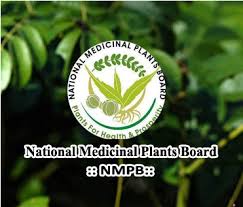 National Medicinal plants board
National Medicinal plants board
The main objective of the National Medicinal Plants Board (NMPB) is to encourage the cultivation of Medicinal plants and its sustainable management across the country and to reduce pressure on the collection from wild habitat in forests. The NMPB established by the Government of India to coordinate with all matters relating to Medicinal Plants for growth of trade, export, and cultivation.
Governments for development of Medicinal plants particularly in the following fields;
- Assessment of demand or supply position relating to Medicinal plants.
- Guide the formulation of proposals, schemes and also programs, etc. to be taken by agencies having access to land for plant cultivation and infrastructure for collection, storage transportation of Medicinal plants.
- Identification, inventorization and also the quantification of Medicinal plants.
- The promotion of co-operative effort among collectors and assisting them to store, transport and market their products efficiently.
- Facilitating the prevention of Patents being obtained for Medicinal plants use which is in the public domain.
Some of the common Medicinal plants
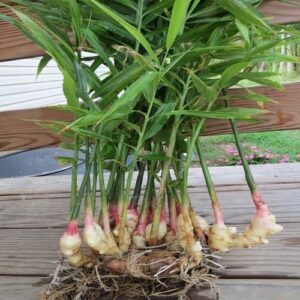 Ginger
Ginger
In many Asian countries, especially in India, it is a part of the daily diet. Because the Medicinal power of ginger can cure several diseases. The ginger root has several remedial actions such as antibacterial, antiviral and also antioxidant. Ginger juice can balance digestive procedure. Ginger improves the nutrient absorption power of the body. Ginger could keep away nausea during post-surgery.
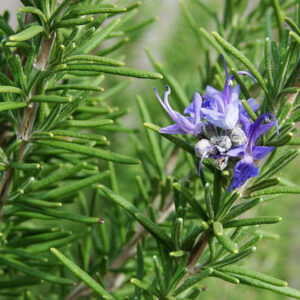 Lavender
Lavender
It is one of the best remedies for glowing skin. This purple beauty in your garden has many Medicinal properties. The oil extracted from this flower has antibacterial and antiviral properties. It is beneficial in many medical conditions like anxiety, stress, and insomnia. Lavender oil can keep away dandruff and cool down your scalp. It helps to get relief from dryness, itching, and swelling of the skin.
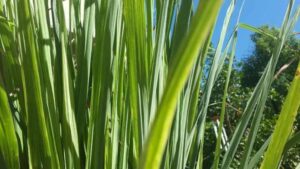 Lemongrass
Lemongrass
Drink lemongrass tea to relieve a sore throat. If you have trouble sleeping, drinking lemongrass tea before sleeping could help you get rid of insomnia and stress. Lemongrass is helpful in pain management and has antipyretic properties.
Garlic is a member of the onion family and it is used in many countries in various dishes. Garlic is a popular herb and it can heal a wide range of diseases. It is low in calories and also rich in nutrients.
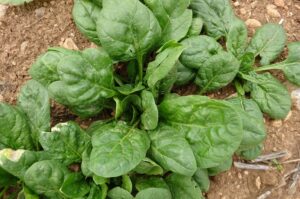 Spinach
Spinach
Spinach is the edible flowering plant and it is a great source of vitamins and minerals. Spinach contains Vitamin K, A, B1, B3, C. And also contains Manganese, Folate, Magnesium, Iron, Zinc, Phosphorous, and Selenium.
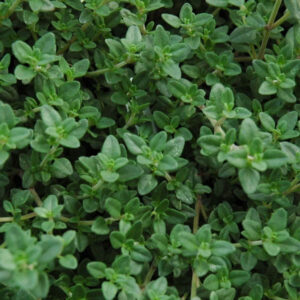 Thyme
Thyme
It is widely used as an aromatic plant. Its flowers, leaves, and oil also many health benefits. The thyme was used for embalming and to heal other medical conditions. Thyme plant has anti-fungal, anti-viral, anti-septic and also anti-parasitic properties.
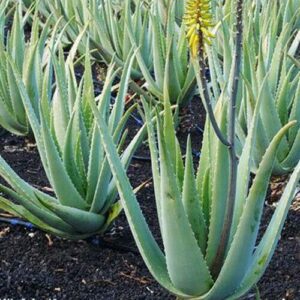 Aloe vera
Aloe vera
The aloe Vera plant is a trusted remedy for Indians to treat skin inflammation, breakouts, and burns. Aloe Vera juice is well-known to boost a weak immune system.
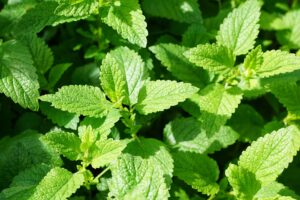 Mint
Mint
Mint is a very homegrown Medicinal plant in India. In summer in India, leaves seem to be a godsend as its fragrance is rejuvenating. Mint tea helps you stay calm and if you are insomniac, mint tea could help you feel composed and have a sound sleep. Mint fragrance is believed to keep the mosquitoes away. It is beneficial in treating cold, cough, and diarrhoea.
 Tulsi/Basil
Tulsi/Basil
Tulsi or Holy Basil is known as ‘Elixir of Life’ in Ayurveda in India and also a well known Medicinal plant. Tulsi tea in India is effective in treating cold and flu. The Holy Basil plant features in NASA list of air-purifying plants. Plant leaves can treat digestive issues and are also believed to have anti-cancer properties.
Characteristics of Medicinal plants
Medicinal plants have various characteristics when used as a treatment, as follow:
Synergic medicine – The ingredients of plants all interact simultaneously, their uses can complement or neutralize their possible negative effects.
Support of official medicine – In the treatment of complex cases such as cancer diseases the components of the plants proved to be very effective.
Preventive medicine – It has been proven that the component of the plants characterizes by their ability to prevent the appearance of some diseases. This will help to reduce the use of the chemical remedies which will be used when the disease is `already present that means reduce the side effect of synthetic treatment.
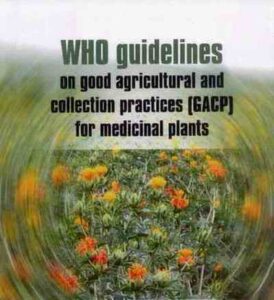 GACP guidelines for Medicinal plants
GACP guidelines for Medicinal plants
WHO Guidelines on Good Agricultural and Collection Practices (GACP) for Medicinal Plants can be given below:
These guidelines are related to WHO’s work on the protection of Medicinal plants, aiming promotion of sustainable use and Medicinal plant cultivation.
The main objectives of these guidelines are to:
- The quality assurance of plant materials used as the source for herbal medicines to improve the quality of finished products;
- Also, guide the formulation of national and regional GACP guidelines for Medicinal plants and related standard operating procedures; and
- Encourage sustainable plant cultivation of good quality in ways that respect and support the conservation of plants.
These objectives play an important role in the protection of natural resources of Medicinal plants for sustainable use.
Financial and Business expert having 30+ Years of vast experience in running successful businesses and managing finance.
